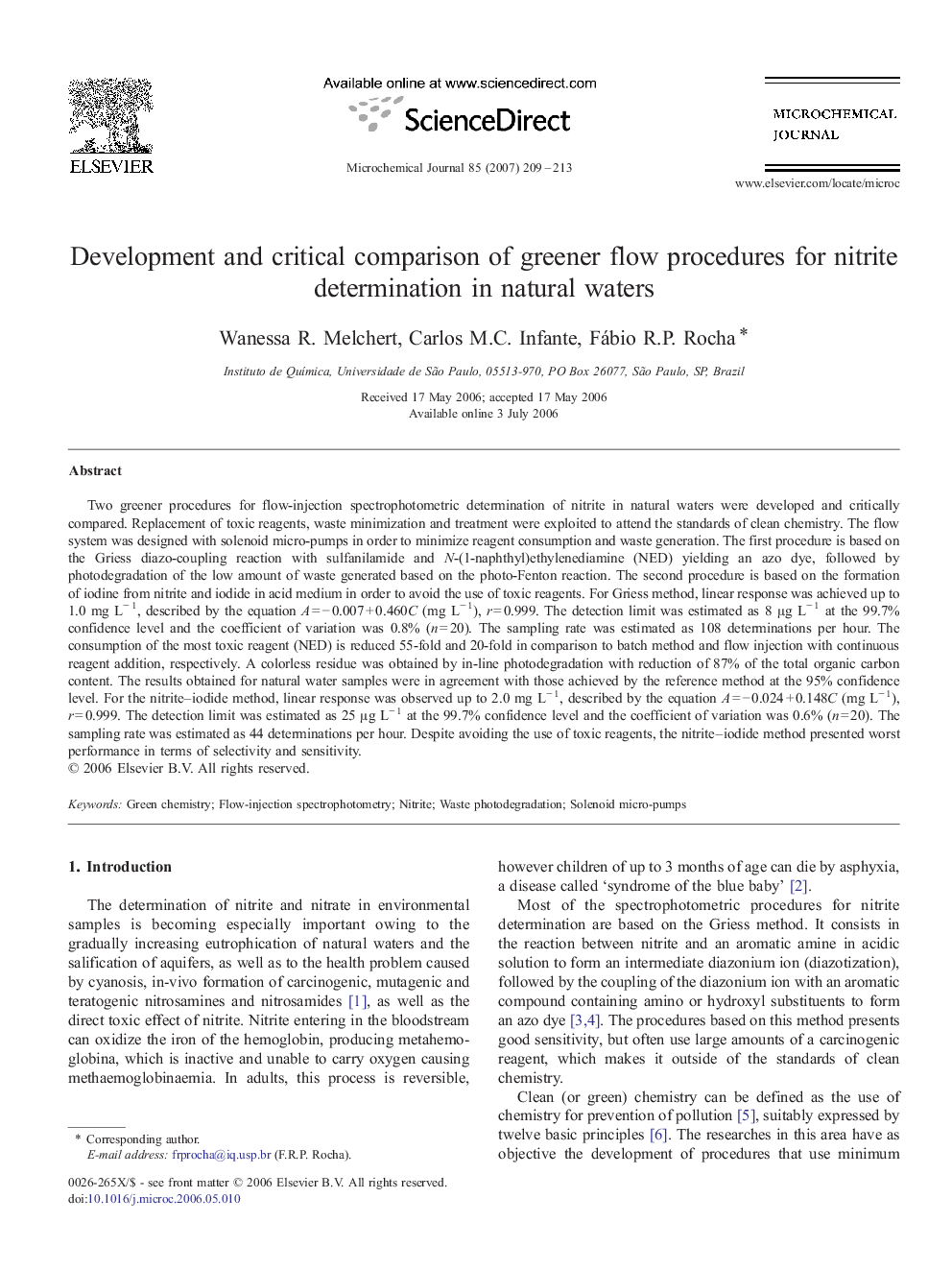| Article ID | Journal | Published Year | Pages | File Type |
|---|---|---|---|---|
| 1228448 | Microchemical Journal | 2007 | 5 Pages |
Two greener procedures for flow-injection spectrophotometric determination of nitrite in natural waters were developed and critically compared. Replacement of toxic reagents, waste minimization and treatment were exploited to attend the standards of clean chemistry. The flow system was designed with solenoid micro-pumps in order to minimize reagent consumption and waste generation. The first procedure is based on the Griess diazo-coupling reaction with sulfanilamide and N-(1-naphthyl)ethylenediamine (NED) yielding an azo dye, followed by photodegradation of the low amount of waste generated based on the photo-Fenton reaction. The second procedure is based on the formation of iodine from nitrite and iodide in acid medium in order to avoid the use of toxic reagents. For Griess method, linear response was achieved up to 1.0 mg L− 1, described by the equation A = − 0.007 + 0.460C (mg L− 1), r = 0.999. The detection limit was estimated as 8 μg L− 1 at the 99.7% confidence level and the coefficient of variation was 0.8% (n = 20). The sampling rate was estimated as 108 determinations per hour. The consumption of the most toxic reagent (NED) is reduced 55-fold and 20-fold in comparison to batch method and flow injection with continuous reagent addition, respectively. A colorless residue was obtained by in-line photodegradation with reduction of 87% of the total organic carbon content. The results obtained for natural water samples were in agreement with those achieved by the reference method at the 95% confidence level. For the nitrite–iodide method, linear response was observed up to 2.0 mg L− 1, described by the equation A = − 0.024 + 0.148C (mg L− 1), r = 0.999. The detection limit was estimated as 25 μg L− 1 at the 99.7% confidence level and the coefficient of variation was 0.6% (n = 20). The sampling rate was estimated as 44 determinations per hour. Despite avoiding the use of toxic reagents, the nitrite–iodide method presented worst performance in terms of selectivity and sensitivity.
